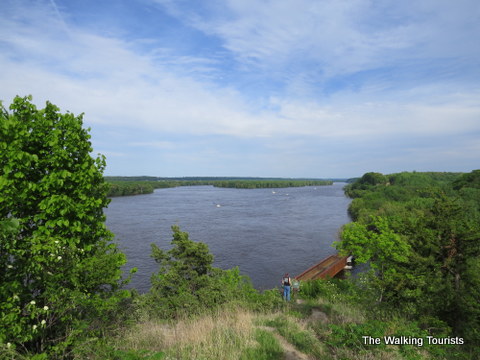Mines of Spain park home to Dubuque city namesake
Considered the first European settler to visit the northeast Iowa area, Julien Dubuque left a legacy.
Iowa’s eighth largest city is named after the French-Canadian fur trader.
Dubuque settled in the area during the late 1780s. He received permission from the Meskwaki Indians to mine lead during that time. Within the decade, Spain’s control of the region resulted in him obtaining an “official” permit to mine from the Spaniards.
Dubuque was befriended by the Native Americans upon his arrival. He “married” the daughter of the Meskwaki chief, Peosta.
Dubuque lived the rest of his life in northeast Iowa.
Dubuque’s lead mines were named after the Spanish – the Mines of Spain.
The Mines of Spain state recreational area is home to Dubuque’s gravesite and monument.
The grave is secured inside a castle turret-shaped monument.
The monument sits atop a bluff overlooking the Mississippi River and the city bearing Dubuque’s name.
Nearby is the grave of Chief Peosta. The Meskwaki are believed to have been in the area for up to 8,000 years before Dubuque arrived.
Notable facts involving a series of “firsts” for Dubuque can be viewed at the park: Iowa’s first church was located here; the first newspaper in the state published here. Other “firsts” include the first bank.
On the negative side, Dubuque was the site of Iowa’s first murder. Then, on the other end of the criminal justice scale, the first public hanging in Iowa took place here.
The state recreation area is home to plenty of hiking and walking trails, picnic areas, wetlands, ski trails and a bird and butterfly garden.
For more information on the Mines of Spain area, please visit http://www.minesofspain.org/.











